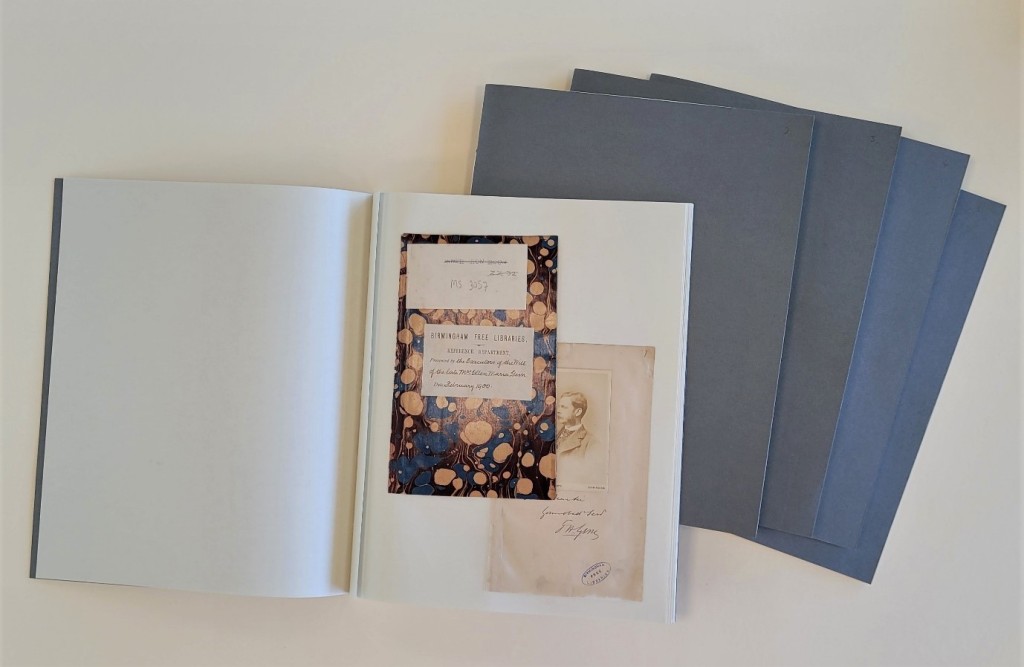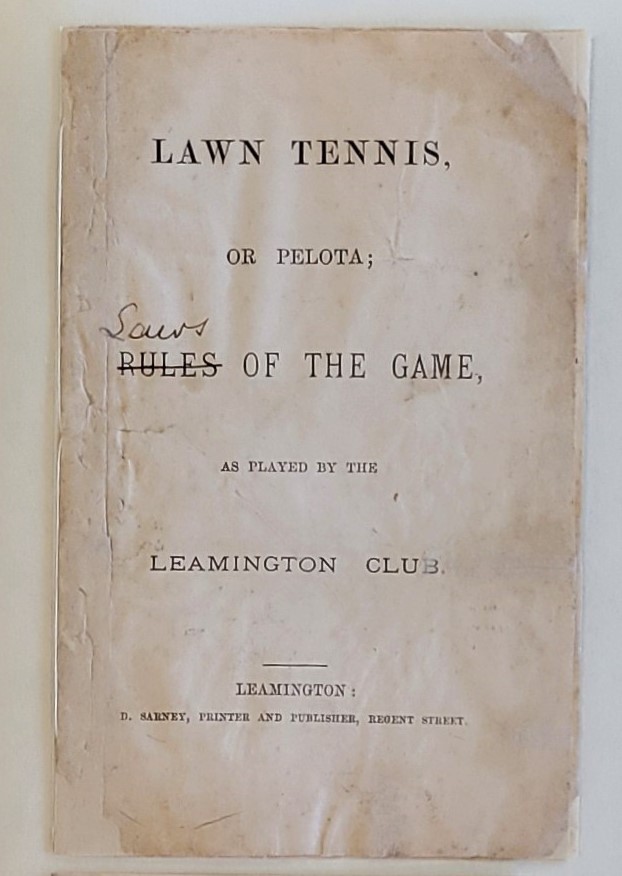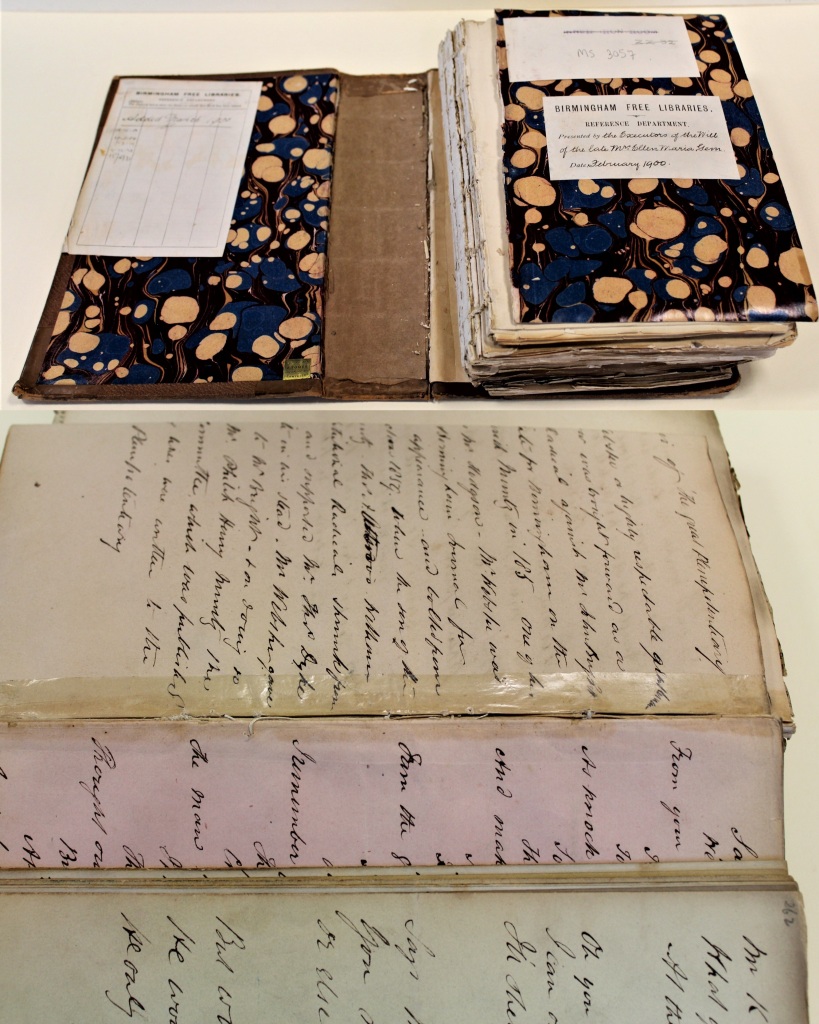When I think of Wimbledon I obviously think of tennis, strawberries and cream and its perfect green grass courts. I have never thought of Birmingham. However, when I saw ‘Harry Gem’s scrapbook’ back in 2019 that changed. Within the scrapbook there was a booklet with an annotation crossing out ‘Rules’ replacing it with ‘The Laws of Lawn Tennis.’ (See Fig 1.) Having read up a bit more I realised that the tennis played at Wimbledon today was developed by Harry Gem, a Brummie!
Harry Gem was a Solicitor from Birmingham. Along with his friend Augurio Perera, they developed a game which became known as lawn tennis, sometime between 1859 – 1865. They formed the first ever tennis club in Leamington Spa in 1872 with a second club being set up in Edgbaston shortly after. The game Harry Gem helped to develop was the beginnings of the game of tennis which we know today. Gem’s scrapbook contains various mementos showing us his thoughts and what interested him throughout his life, including his interest in developing the then new sporting game – Lawn tennis!
Whilst finding out about Birmingham’s tennis connection, the scrapbook had sadly seen better days. The cover had become completely detached from the text block, with the letters, illustrations, booklets and newspaper articles becoming torn and weakened. The pages within the scrapbook had significant amounts of surface dirt, the inappropriate use of pressure sensitive tapes to try and repair the binding had yellowed, and the binding itself was loose and split in places. Oversized items in the scrapbook had been folded to fit in the binding which was not ideal. Overall the binding had failed, with the scrapbook unable to be handled without potentially causing further damage.
Due to the length of time it would take to treat this object, as well as our limited resources, money was fundraised by ‘The Harry Gem Project’ to enable the conservation treatment. Once the funds were secured, we were able to send the book to Arthur Green, a book conservator, for the volume to be treated. It was decided that rather than try and reattach the cover to the text block and repair the binding, so it was in a handleable state, it was preferable to take the longer-term preservation into account. Repairing the book in the short-term would improve handling but unfortunately the binding would eventually fail again and eventually the cover would become detached from the text-block. It was therefore decided to dis-bind the scrapbook completely and place the pages into fascicules.
A fascicule is a pamphlet style binding system which enables the safe storage of loose and irregular sized archival objects. First developed at the Bodleian Library in Oxford, the fascicule provides safe storage whilst minimising handling. Fascicules are made up of blank, archival quality paper with hooked guards. The scrap book items are attached using hinges made from Japanese paper and adhered with wheat starch paste onto the pages of the fascicules, usually one or two objects per page. The fascicules are of uniform size, with the pages being larger than the items being hinged in. These larger pages provide protection to the scrap book items as the reader will handle the fascicule pages not the scrap book items themselves.
The conservation treatment was in-depth, and the following was undertaken:
• Removing all surface dirt with a smoke sponge
• The book was dis-bound, and the remaining sewing structure and spine linings removed
• Some items were separated from the blank support sheets using a steam-pen, which softens the adhesive
• Some scrap book objects were washed in water which was slightly alkaline (pH 8)
• All folded scrap book objects were flattened with torn items repaired using Japanese paper.
• All pressure sensitive tape was removed using a solvent to dissolve the adhesive
• All the scrapbook objects were placed into five archival fascicules, with items hinged along the left edge with Japanese paper. These fascicules are housed in an archival box-board box

The conservation treatment has been a great success and has now made Harry Gem’s scrap book accessible to readers and secured its long-term preservation. The scrapbook can now be handled with ease and you are now able to see all items within the scrapbook in their entirety which just wasn’t possible before.
We also want to extend our thanks to Robert Holland and The Harry Gem Project who generously fundraised the money to enable the conservation treatment to happen, and to Arthur Green who did a fantastic job of conserving Harry Gem’s scrap book.
If you are interested in any fund-raising efforts for conservation treatment of any of our archival objects or just want to find out more please contact archives.enquiries@birmingham.gov.uk.
Lucy Angus, Conservator



Brilliant!
Birmingham is the true birthplace of Lawn Tennis with Major Harry Gem and his friend Augurio Perera first playing Lawn Tennis at 8 Ampton Road in Edgbaston Birmingham in 1859, although they called their game “Pelota” .
Reblogged this on keithbracey and commented:
Birmingham: the true birthplace of Lawn Tennis